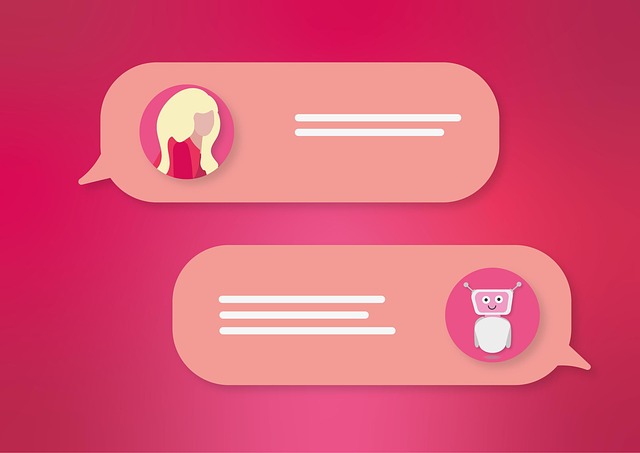In the competitive world of AI chatbots online, effective performance measurement is key to success. By tracking Key Performance Indicators (KPIs) such as response accuracy, average handle time, resolution rates, and user satisfaction scores, businesses can optimize their chatbots for improved user experiences, enhanced operational efficiency, and better business outcomes. Regular analysis of these KPIs enables continuous refinement, ensuring AI chatbots meet and surpass user expectations in the digital realm.
In the dynamic landscape of artificial intelligence, AI chatbots are transforming online interactions. To ensure their effectiveness, understanding key performance indicators (KPIs) is paramount. This article delves into the essential metrics that define chatbot success, from user satisfaction and response accuracy to interaction volume and conversion rates. By defining, tracking, and analyzing these KPIs, businesses can optimize AI chatbot performance, enhancing user experiences in significant ways. Discover how these strategies elevate online chatbot interactions.
- Understanding Chatbot KPIs: The Metrics That Matter
- Defining Key Performance Indicators for AI Chatbots
- Tracking and Measuring Success in Online Chatbot Interactions
- Optimizing AI Chatbot Performance through KPI Analysis
Understanding Chatbot KPIs: The Metrics That Matter

In the realm of AI chatbots online, measuring performance is key to optimization and success. Chatbot KPIs (Key Performance Indicators) provide a clear view of how effectively an AI chatbot engages users and fulfills its intended purpose. These metrics go beyond simple user satisfaction, delving into operational efficiency, business impact, and user experience. By tracking the right KPIs, businesses can ensure their chatbots deliver value, enhance customer interactions, and drive desired outcomes.
Key performance indicators for AI chatbots often include response accuracy, average handle time, resolution rates, and user satisfaction scores. For instance, monitoring the percentage of correct responses out of all queries assesses the chatbot’s knowledge base and training. Similarly, tracking the average time taken to resolve a user issue highlights the chatbot’s efficiency in handling tasks. User satisfaction metrics, such as Net Promoter Score (NPS) or chat completion rates, gage the overall user experience and loyalty. These KPIs are instrumental in refining chatbot strategies, improving performance, and enhancing the overall digital landscape for businesses and their customers.
Defining Key Performance Indicators for AI Chatbots

Defining Key Performance Indicators (KPIs) for AI Chatbots is a critical step in evaluating their effectiveness and success. In the realm of AI chatbots online, KPIs serve as metrics that quantify user satisfaction, engagement, and problem-solving abilities. These indicators allow businesses to navigate the complex landscape of chatbot performance and make data-driven decisions.
When establishing KPIs, it’s essential to consider factors such as response accuracy, user interaction time, and conversion rates. For instance, a key metric for customer service chatbots could be the percentage of queries resolved without human intervention. In e-commerce, tracking add-to-cart rates or purchase conversions after chatbot interactions can provide valuable insights into their sales-driving capabilities. By setting clear KPIs, businesses can efficiently monitor, optimize, and enhance the overall performance of AI chatbots online.
Tracking and Measuring Success in Online Chatbot Interactions

In the realm of AI chatbots online, tracking and measuring success is paramount for ensuring these digital assistants meet user expectations and business goals. Key Performance Indicators (KPIs) play a crucial role in evaluating chatbot effectiveness. Metrics such as response accuracy, customer satisfaction scores, and first response time are essential indicators of performance. By analyzing these KPIs, businesses can identify areas where their chatbots excel or fall short.
For instance, high response accuracy rates suggest the chatbot is providing relevant and accurate information to users. Rapid first response times indicate a well-optimized system capable of handling user queries efficiently. Customer satisfaction scores, often measured through sentiment analysis, offer valuable insights into user experience and help identify potential bottlenecks or areas for improvement in chatbot interactions.
Optimizing AI Chatbot Performance through KPI Analysis

In the realm of AI chatbots online, performance optimization is key to enhancing user experiences and driving business value. Key Performance Indicators (KPIs) play a pivotal role in this process by providing measurable metrics that highlight chatbot effectiveness. By analyzing KPIs such as response accuracy, customer satisfaction ratings, and conversation completion rates, developers can identify areas for improvement and fine-tune the chatbot’s capabilities. This data-driven approach ensures that the AI chatbot not only meets but exceeds user expectations.
Regular KPI analysis allows for continuous refinement of the chatbot’s algorithms and training data, leading to more sophisticated interactions and increased efficiency. As chatbots evolve, aligning their performance with specific business objectives becomes crucial, enabling organizations to leverage these digital assistants to their fullest potential in today’s fast-paced online environment.
AI chatbots are transforming online interactions, making it crucial to track their performance using relevant Key Performance Indicators (KPIs). By understanding and defining specific KPIs like response accuracy, customer satisfaction ratings, and interaction volume, businesses can optimize their AI chatbot strategies. Regularly measuring and analyzing these metrics allows for continuous improvement, ensuring that online chatbot experiences meet user expectations and drive business goals.
